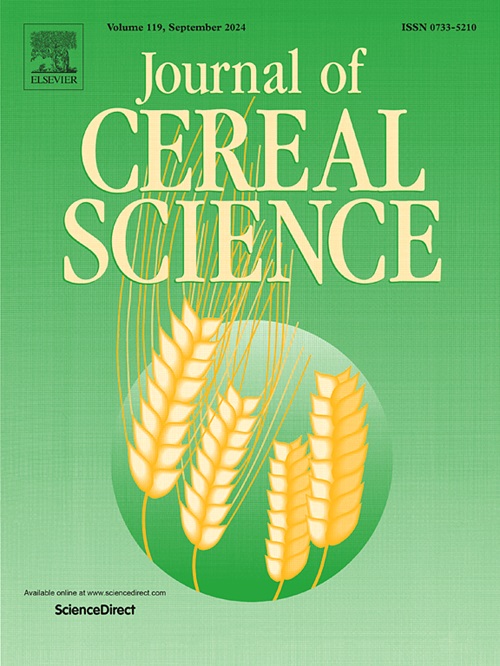优化大米淀粉改性组合技术的加工顺序:当前认识的一个小回顾
IF 3.7
2区 农林科学
Q2 FOOD SCIENCE & TECHNOLOGY
引用次数: 0
摘要
大米淀粉改性技术在食品工业中的广泛应用引起了人们的广泛关注。尽管天然大米淀粉具有低致敏性、粒度细、口感中性、颜色洁白等优点,但其水溶性差、剪切力敏感性高、耐高温性差。虽然开发了多种单一改性方法,但它们往往面临着能源成本高、工艺耗时长、改性效果有限等挑战,特别是由于大米淀粉固有的稳定的a型晶体结构。这篇综述系统地研究了如何通过协同效应战略性地结合多种加工技术来克服这些限制。本文分析了稻谷复合加工技术的基本原理、最佳加工顺序及应用。化学修饰和机械辅助处理(脉冲电场、超声波)通常是有效的预处理,柠檬酸在酸修饰中显示出最高的有效性。PEF预处理与酶解相结合,克服了高直链淀粉大米改性效率低下的问题,而超声波处理产生多孔结构,优先应用于糙米,以改善感官属性并缩短烹饪时间。传统的热处理方法(退火、热湿、干热)和创新的方法(微波、红外辐射)根据水稻直链淀粉含量表现出不同的效果,在改性低直链淀粉品种方面取得了更大的成功。值得注意的是,红外辐射显示出在保留生物活性化合物的同时修饰色素水稻的巨大潜力。还探索了包括3D打印和高压均质化在内的新方法。冷等离子体处理在工业规模、生态友好型淀粉改性方面尤其有前景。该综述解决了关键的实施挑战,特别是原材料可变性和加工参数优化,为标准化生产过程提出了数据驱动的解决方案。本文章由计算机程序翻译,如有差异,请以英文原文为准。

Optimizing processing sequences in combined techniques for rice starch modification: A mini review of current understanding
Rice starch modification has gained significant attention due to its widespread applications in food industries. Despite its advantages including hypoallergenic properties, fine particle size, neutral taste, and bright white color, native rice starch faces critical limitations such as poor water solubility, high sensitivity to shear forces, and inability to withstand high temperatures. While diverse single modification methods have been developed, they often face challenges including high energy costs, time-consuming processes, and limited modification effects, particularly due to rice starch's inherently stable A-type crystalline structure. This review systematically examines how strategically combining multiple processing techniques can overcome these limitations through synergistic effects. The paper analyzes the rationale, optimal processing sequences, and applications of combined food processing techniques for various rice-based products and materials. Chemical modifications and mechanical-assisted treatments (pulsed electric field, ultrasound) typically serve as effective pretreatments, with citric acid showing the highest effectiveness among acid modifications. PEF pretreatment is specifically combined with enzymatic hydrolysis to overcome inefficiencies in modifying high-amylose rice, while ultrasound treatment creates porous structures and is preferentially applied to brown rice to improve sensory attributes and reduce cooking time. Traditional thermal treatments (annealing, heat-moisture, dry heat) and innovative methods (microwave, infrared radiation) demonstrate varying effectiveness based on rice amylose content, with greater success in modifying low-amylose varieties. Notably, infrared radiation shows high potential for modifying pigmented rice while preserving bioactive compounds. Novel approaches including 3D printing and high-pressure homogenization are also explored. Cold plasma treatment emerges as particularly promising for industrial-scale, eco-friendly starch modification. The review addresses key implementation challenges, particularly raw material variability and processing parameter optimization, proposing data-driven solutions for standardizing production processes.
求助全文
通过发布文献求助,成功后即可免费获取论文全文。
去求助
来源期刊

Journal of Cereal Science
工程技术-食品科技
CiteScore
7.80
自引率
2.60%
发文量
163
审稿时长
38 days
期刊介绍:
The Journal of Cereal Science was established in 1983 to provide an International forum for the publication of original research papers of high standing covering all aspects of cereal science related to the functional and nutritional quality of cereal grains (true cereals - members of the Poaceae family and starchy pseudocereals - members of the Amaranthaceae, Chenopodiaceae and Polygonaceae families) and their products, in relation to the cereals used. The journal also publishes concise and critical review articles appraising the status and future directions of specific areas of cereal science and short communications that present news of important advances in research. The journal aims at topicality and at providing comprehensive coverage of progress in the field.
 求助内容:
求助内容: 应助结果提醒方式:
应助结果提醒方式:


